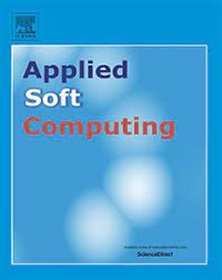Dual degradation image inpainting method via adaptive feature fusion and U-net network
IF 7.2
1区 计算机科学
Q1 COMPUTER SCIENCE, ARTIFICIAL INTELLIGENCE
引用次数: 0
Abstract
Most existing image inpainting methods are designed to address a single specific task, such as super-resolution, denoising, or colorization, with few models capable of handling dual degradation simultaneously. Moreover, current algorithms that tackle multiple image degradation problems often suffer from complex structures, prolonged training times, and high labor costs. In this paper, we propose a Dual Degradation Network via Adaptive Feature Fusion and U-Net (AFFU). The network employs a Self-Guided Module (SGM) to fuse multi-scale image information, effectively eliminating certain defects in the image. A coder-decoder module with null convolution is utilized to consolidate the semantic information of the image, enabling intermediate image colorization. Additionally, an Adaptive Multi-feature Fusion Module (AMF) and Information Transfer Mechanism (ITM) are introduced to link these two major structures, adaptively selecting and retaining image features during network progression to prevent the loss of useful information. Experimental results demonstrate that the proposed dual image degradation restoration network model, based on adaptive multi-feature fusion, achieves optimal visual generation. Evaluations on CelebA dataset and Landscape dataset show that the proposed method outperforms comparable approaches in terms of Structural Similarity (SSIM) and Learned Perceptual Image Patch Similarity (LPIPS).
基于自适应特征融合和U-net网络的双退化图像修复方法
大多数现有的图像绘制方法都是为了解决单一的特定任务而设计的,例如超分辨率,去噪或着色,很少有模型能够同时处理双重退化。此外,目前处理多种图像退化问题的算法往往结构复杂,训练时间长,人工成本高。本文提出了一种基于自适应特征融合和U-Net (AFFU)的双退化网络。该网络采用自引导模块(Self-Guided Module, SGM)融合多尺度图像信息,有效消除图像中的某些缺陷。利用零卷积的编解码器模块对图像的语义信息进行整合,实现图像的中间着色。此外,引入自适应多特征融合模块(AMF)和信息传递机制(ITM)来连接这两个主要结构,在网络进展过程中自适应地选择和保留图像特征,以防止有用信息的丢失。实验结果表明,基于自适应多特征融合的双图像退化恢复网络模型实现了最优的视觉生成。对CelebA数据集和Landscape数据集的评估表明,该方法在结构相似度(SSIM)和学习感知图像斑块相似度(LPIPS)方面优于同类方法。
本文章由计算机程序翻译,如有差异,请以英文原文为准。
求助全文
约1分钟内获得全文
求助全文
来源期刊

Applied Soft Computing
工程技术-计算机:跨学科应用
CiteScore
15.80
自引率
6.90%
发文量
874
审稿时长
10.9 months
期刊介绍:
Applied Soft Computing is an international journal promoting an integrated view of soft computing to solve real life problems.The focus is to publish the highest quality research in application and convergence of the areas of Fuzzy Logic, Neural Networks, Evolutionary Computing, Rough Sets and other similar techniques to address real world complexities.
Applied Soft Computing is a rolling publication: articles are published as soon as the editor-in-chief has accepted them. Therefore, the web site will continuously be updated with new articles and the publication time will be short.
 求助内容:
求助内容: 应助结果提醒方式:
应助结果提醒方式:


